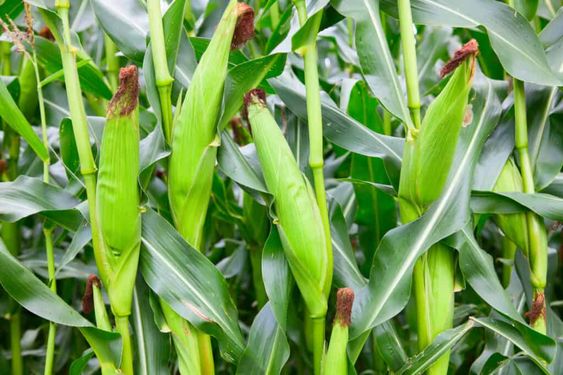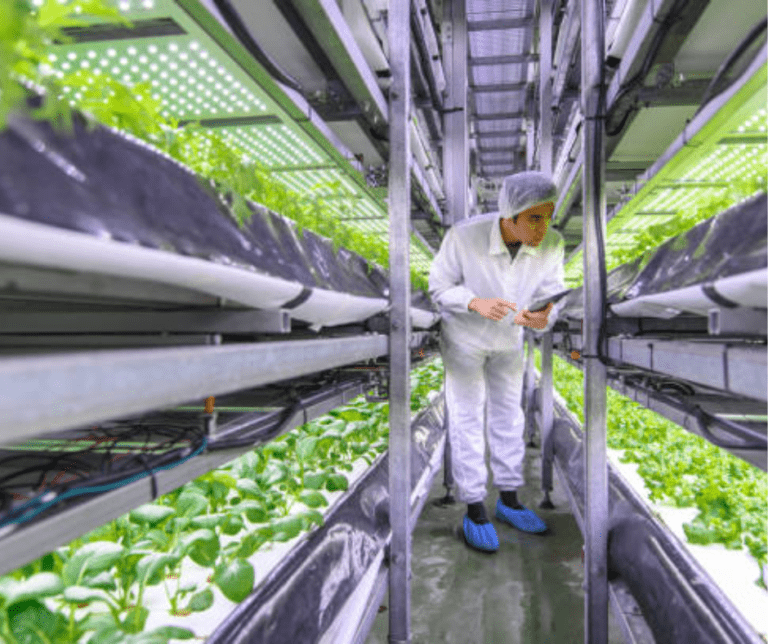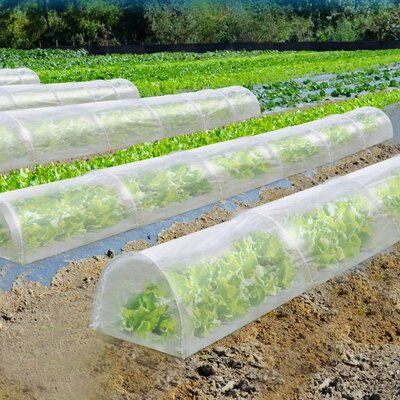Growing Kohlrabi: Time to Grow Alien Veggies
Table of Contents
How to Start Growing Kohlrabi in Your Garden
Kohlrabi, a member of the cabbage family, is a versatile and nutritious vegetable that can be easily grown in your garden. To start growing kohlrabi, begin by choosing a sunny spot with well-drained soil. Kohlrabi prefers cool weather, so consider planting it in early spring or late summer for optimal growth. Before planting, ensure the soil is rich in organic matter and has a pH level between 6.0 and 7.5.
Once you have selected the ideal location for your kohlrabi plants, sow the seeds directly into the ground at a depth of about ¼ to ½ inch. Make sure to space the seeds or seedlings at least 4 to 6 inches apart to allow for proper growth. Water the seeds regularly to keep the soil moist but not waterlogged. As kohlrabi plants grow, be sure to provide adequate sunlight, regular weeding, and proper nutrition through fertilization. By following these simple steps, you can enjoy a bountiful harvest of delicious kohlrabi from your garden.

Choosing the Right Variety of Kohlrabi Seeds
When choosing the right variety of kohlrabi seeds for your garden, it’s essential to consider factors such as climate, space availability, and preferred taste and texture. Different varieties of kohlrabi offer various colors, sizes, and flavor profiles, allowing you to select the perfect option for your gardening needs. Some popular varieties to consider include ‘Early White Vienna’ for its quick maturity and tender texture, ‘Purple Vienna’ for its striking color and mild flavor, and ‘Grand Duke’ for its larger size and sweet taste.
In addition to color and taste preferences, it’s crucial to select kohlrabi seeds that are well-suited to your climate and growing conditions. Varieties like ‘Kolibri’ and ‘Blaro’ are known for their heat tolerance, making them ideal choices for warmer regions, while ‘Superschmelz’ and ‘Kossak’ thrive in cooler climates. By carefully considering these factors and choosing the right variety of kohlrabi seeds, you can ensure a successful and bountiful harvest in your garden.

Preparing the Soil for Planting Kohlrabi
When it comes to preparing the soil for planting kohlrabi, there are a few key steps to ensure your plants thrive. Start by choosing a spot in your garden that receives full sun and has well-draining soil. Kohlrabi plants prefer fertile soil with a pH level between 6.0 and 7.5. Before planting, it’s essential to work the soil thoroughly, removing any rocks, weeds, or debris that could impede root growth. Incorporating organic matter like compost or aged manure can also help improve soil structure and nutrient content, providing a healthy environment for your kohlrabi to grow.
Once the soil is prepped, consider conducting a soil test to determine its nutrient levels. This will guide you in making any necessary amendments to optimize conditions for kohlrabi growth. Adding a balanced fertilizer according to the test results can help provide the essential nutrients kohlrabi plants need to thrive. Remember to avoid over-fertilizing, as this can lead to imbalances in the soil and negatively impact plant health. By taking the time to properly prepare your soil, you’re setting the stage for a successful kohlrabi harvest.
Here are the steps for preparing the soil for planting kohlrabi:
| Step | Description |
| 1 | Select a variety of kohlrabi: Choose from green or purple varieties based on your preference. Green varieties like Korridor and Winner mature quickly, while purple varieties like Azur Star and Kolibri are bug-resistant. Taste-wise, there’s not much difference. Storage varieties like Kossak, Superschmelz, and Gigante are larger and last longer in storage. |
| 2 | Choose a planting location: Plant kohlrabi in full sun near other root vegetables like potatoes, beets, and onions. Kohlrabi needs fertile soil and regular watering. Keep it separate from pole beans, tomatoes, and strawberries. |
| 3 | Prepare the soil: Till the soil several weeks before the last spring frost. Kohlrabi thrives in well-tilled soil enriched with compost. Aim for a pH between 5.5 and 6.8 and ensure good drainage to prevent rot and blight. |
| 4 | Plant in cool weather: Kohlrabi is hardy and should be planted about a month before the last spring frost. It prefers temperatures below 75°F. |
| 5 | Indoor starting (optional): Kohlrabi seeds can be started indoors or in a cold frame or plastic tunnel. |
Sowing Kohlrabi Seeds in the Ground
When sowing kohlrabi seeds in the ground, it is essential to choose a sunny location with well-draining soil. Before planting, ensure the soil is loose and free of any debris or rocks to promote healthy root growth. Kohlrabi thrives in soil with a pH level between 6.0 and 7.5, so testing and adjusting the soil if necessary can greatly benefit the plants.
When planting the seeds, space them about 4-6 inches apart in rows that are at least 12 inches apart to allow for proper growth and development. The seeds should be sown approximately 1/4 to 1/2 inch deep in the soil and lightly covered with a thin layer of soil. Be sure to water the seeds gently after planting to provide the moisture needed for germination, taking care not to wash them away.

Caring for Kohlrabi Plants as They Grow
Kohlrabi plants require consistent care to ensure optimal growth and development. As the plants mature, it is crucial to provide them with adequate water, especially during hot and dry periods. Regular watering helps prevent the soil from drying out, which can hinder the growth of the kohlrabi bulbs. Additionally, fertilizing the plants with a balanced fertilizer high in nitrogen can promote healthy foliage and root development.
Another key aspect of caring for kohlrabi plants as they grow is ensuring they are free from weeds that can compete for valuable nutrients and sunlight. Weeding regularly around the base of the plants can help reduce competition and allow the kohlrabi to thrive. Furthermore, monitoring the plants for any signs of pests or diseases is essential in maintaining their health. Early detection and treatment of any issues can prevent extensive damage and ensure a successful harvest.
Watering and Fertilizing Kohlrabi Plants
To ensure the healthy growth and development of your kohlrabi plants, proper watering and fertilizing are essential aspects to consider. Kohlrabi plants need a consistent and adequate water supply to thrive. It is crucial to water the plants regularly, especially during dry periods, to keep the soil moist but not waterlogged. Aim to water the plants at the base to avoid wetting the foliage, which can lead to disease issues. Additionally, using a soaker hose or drip irrigation system can be beneficial in delivering water directly to the roots.
When it comes to fertilizing kohlrabi plants, providing them with the right nutrients is key to promoting strong growth and a bountiful harvest. Before planting, incorporate organic matter such as compost into the soil to enrich it with essential nutrients. During the growing season, consider using a balanced fertilizer to feed the plants every few weeks. Be mindful not to over-fertilize, as this can lead to lush foliage at the expense of bulb development. Always follow the recommended dosage instructions on the fertilizer package to prevent nutrient imbalances that can harm the plants.
Protecting Kohlrabi Plants from Pests and Diseases
To protect your kohlrabi plants from pests and diseases, it’s crucial to implement proactive measures that can safeguard your crop and ensure a healthy harvest. One effective method is practicing crop rotation, which helps prevent the buildup of pests and diseases in the soil by alternating where you plant your kohlrabi each year. Additionally, keeping your garden clean and free of debris can help reduce the likelihood of attracting harmful insects and pathogens that can harm your plants.
Steps to protect your kohlrabi garden from pests:
| Pest/Disease | How to Control It |
| Aphids | Aphids are quite common on kohlrabi plants. Control them by using appropriate insecticides or natural remedies. |
| Cabbage worms | Deal with cabbage worms using insecticidal soap or other pesticides. |
| Slugs and snails | Prevent slugs and snails from feeding on kohlrabi by employing effective control methods. |
| Caterpillars and Loopers | Manage caterpillars and loopers to protect your kohlrabi crop. |
| Moths | Use insecticidal soap or neem oil to deter moths from damaging kohlrabi leaves. |
| Armyworms | Control armyworms using insecticidal soap or other suitable pesticides. |
| Cutworms | Prevent cutworm damage by implementing targeted measures. |
| Nematodes | Combat nematodes with diatomite or insecticidal soap. |
| Thrips | Address thrips issues to safeguard your kohlrabi plants. |
| Flea beetles | Spray stinging nettle liquid or neem oil on kohlrabi leaves to deter flea beetles. |
Another key strategy for protecting your kohlrabi plants is to regularly inspect them for any signs of pest infestations or diseases. By catching issues early on, you can address them promptly and prevent them from spreading further throughout your garden. Utilizing natural remedies like neem oil or introducing beneficial insects can also help control pests in a safe and environmentally friendly manner.
Harvesting Kohlrabi at the Right Time
When it comes to harvesting kohlrabi, it’s crucial to pick them at the right time to ensure optimal flavor and texture. Kohlrabi is typically ready to be harvested when the bulb reaches about 2-3 inches in diameter. To check if it’s ready, gently press the bulb to feel its firmness – a slight give indicates it’s ready for harvest. Additionally, the stem and leaves should still look fresh and vibrant, indicating the vegetable is at its peak.
Timing is key when harvesting kohlrabi, as leaving it in the ground too long can result in a woody texture and loss of flavor. Once you’ve determined that your kohlrabi is ready for harvest, use a sharp knife to cut the stem just above ground level. Avoid twisting or yanking the bulb, as this can damage the plant. After harvesting, be sure to store kohlrabi in the refrigerator to maintain its freshness and flavor until you’re ready to enjoy it in your favorite dishes.
Storing Kohlrabi for Extended Use
After harvesting your kohlrabi, you may find yourself with an abundance of this versatile vegetable. Storing kohlrabi properly is essential to extend its shelf life and enjoy its freshness for longer periods. One of the best ways to store kohlrabi is by refrigerating it. Place unwashed kohlrabi in a perforated plastic bag in the vegetable crisper section of your refrigerator. This method can help retain the vegetable’s moisture and crispness, keeping it fresh for up to two weeks.
Alternatively, you can store kohlrabi in the root cellar or a cool, dark place such as a garage or basement. Trim the leaves, leaving a small portion attached to the bulb, and store the kohlrabi in a cool, humid environment to prevent wilting. By following these simple storage techniques, you can enjoy the flavor and nutritional benefits of kohlrabi well beyond its harvest date.
Cooking with Kohlrabi: Delicious Recipes to Try
Kohlrabi, with its crunchy texture and mild flavor, is a versatile vegetable that can be incorporated into various recipes. Whether you prefer it raw in salads or cooked in stir-fries, there are plenty of delicious ways to enjoy this nutritious veggie. One simple yet flavorful dish to try is a kohlrabi slaw, which combines thinly sliced kohlrabi with a zesty dressing of lemon juice, olive oil, and fresh herbs. This refreshing side dish is perfect for a summer barbecue or picnic.
For a heartier option, consider roasting kohlrabi in the oven with olive oil, garlic, and parmesan cheese. The high heat brings out the natural sweetness of the kohlrabi while creating a crispy exterior. This dish makes a delicious and nutritious alternative to traditional potato fries. Additionally, adding chopped kohlrabi to soups or stews can elevate the flavors and provide a satisfying crunch. Experimenting with kohlrabi in different recipes can open up a world of culinary possibilities for home cooks looking to diversify their vegetable intake.
Benefits of Adding Kohlrabi to Your Diet
Kohlrabi, a member of the cabbage family, is a versatile and nutrient-packed vegetable that can offer a wide array of health benefits when added to your diet. Packed with vitamins C and K, as well as fiber, potassium, and antioxidants, kohlrabi can contribute to improved immune function, bone health, digestion, and overall well-being. Its low calorie and high water content make it a great choice for those looking to maintain a healthy weight or manage conditions like high blood pressure.
Furthermore, the unique flavor and texture of kohlrabi can add a refreshing twist to salads, stir-fries, soups, and smoothies, making it a delicious and nutritious addition to any meal. Whether enjoyed raw or cooked, this underrated vegetable can bring a burst of freshness and crunch to your dishes while providing a hefty dose of essential nutrients.
Here are the benefits of adding kohlrabi to your diet:
| Benefit | Description |
| Rich in nutrients | Kohlrabi is a great source of vitamins C and K, as well as dietary fiber. It also contains essential minerals like potassium and manganese. |
| Low in calories | With only about 27 calories per 100 grams, kohlrabi is a guilt-free addition to your meals. |
| Boosts immunity | The high vitamin C content supports your immune system and helps fight off infections. |
| Digestive health | The fiber in kohlrabi promotes healthy digestion and prevents constipation. |
| Antioxidant properties | Kohlrabi contains antioxidants that protect your cells from oxidative damage. |
| Hydration | Its high water content keeps you hydrated and supports overall health. |
| Versatile in cooking | Kohlrabi can be enjoyed raw in salads, pickled, roasted, or added to soups and stews. |
Unique Ways to Incorporate Kohlrabi into Your Meals
Kohlrabi is a versatile vegetable that can elevate your meals with its unique flavor and texture. One way to incorporate kohlrabi into your meals is by slicing it thinly and adding it to salads for a crunchy twist. Its mild, slightly sweet taste pairs well with a variety of salad dressings, making it a refreshing addition to your greens. Additionally, you can julienne kohlrabi and use it as a crunchy topping for tacos, sandwiches, or wraps. This adds a delightful crunch that contrasts beautifully with other ingredients, adding both texture and flavor to your dish.
Another creative way to enjoy kohlrabi is by roasting it with a drizzle of olive oil and your favorite seasonings. The roasting process enhances its natural sweetness and caramelizes the edges, resulting in a delicious side dish or snack. You can also blend cooked kohlrabi into soups or purees to add a creamy texture and subtle flavor. By experimenting with different cooking methods, you can unlock the full potential of kohlrabi and create mouthwatering dishes that will delight your taste buds.
Sharing Your Kohlrabi Harvest with Others
Sharing your kohlrabi harvest with others can be a rewarding experience that not only spreads the joy of homegrown produce but also fosters community connections. Whether you have an abundance of kohlrabi or just want to share the fruits of your labor, there are various ways to spread the love. One simple way is to give kohlrabi to friends, family, or neighbors as a thoughtful gift. You can also consider donating excess harvest to local food banks or community organizations to support those in need. Additionally, participating in farmers’ markets or organizing a neighborhood produce swap can be fun ways to exchange your kohlrabi with others while engaging with the local community.
An alternative approach to sharing your kohlrabi harvest with others is to host a harvest-themed gathering or potluck where you can showcase different kohlrabi dishes and recipes. This not only allows you to share your love for kohlrabi but also encourages others to explore new culinary experiences with this versatile vegetable. Another idea is to host a cooking workshop or demonstration to teach others how to incorporate kohlrabi into their meals creatively. By sharing your knowledge and passion for growing and cooking with kohlrabi, you can inspire others to appreciate this underrated vegetable and possibly spark their interest in gardening as well.
Experimenting with Different Growing Techniques for Kohlrabi
When it comes to cultivating kohlrabi, experimenting with different growing techniques can provide valuable insights into optimizing plant health and yield. One method to explore is raised bed gardening, which offers improved drainage and soil aeration, creating optimal growing conditions for kohlrabi. Additionally, hydroponic systems can be a unique and efficient approach to growing kohlrabi, providing precise control over nutrient delivery and water availability for the plants.
Another technique worth considering is companion planting, where kohlrabi is grown alongside compatible crops to promote biodiversity and natural pest control. By strategically integrating kohlrabi into a diverse garden ecosystem, you can potentially enhance plant resilience and overall garden productivity. Embracing innovative growing techniques not only adds a layer of excitement to your gardening experience but also enables you to fine-tune your cultivation practices for the best possible results.
Troubleshooting Common Issues When Growing Kohlrabi
When growing kohlrabi, you may encounter some common issues that can hinder the success of your harvest. One problem that many gardeners face is poor germination of kohlrabi seeds. This can be caused by planting the seeds too deep in the soil or in soil that is too compacted. To improve germination rates, make sure to plant the seeds at the correct depth and in loose, well-draining soil.
Another issue that can arise when growing kohlrabi is overcrowding. If the plants are too close together, they will compete for resources such as water, sunlight, and nutrients, leading to stunted growth and small, underdeveloped bulbs. To avoid overcrowding, make sure to plant kohlrabi seedlings at the proper spacing recommended for the variety you are growing.
Joining a Community of Kohlrabi Growers for Support and Tips
One of the best ways to expand your knowledge and improve your kohlrabi gardening skills is by joining a community of fellow growers. By connecting with other kohlrabi enthusiasts, you can exchange valuable tips, insights, and experiences that can help you navigate the challenges of growing this unique vegetable. Whether you’re a beginner looking for guidance or an experienced gardener seeking to share your expertise, being part of a community can provide the support and camaraderie you need to succeed in your kohlrabi cultivation journey.
In these communities, you can participate in discussions, ask questions, and share your successes and struggles with like-minded individuals who share your passion for kohlrabi. By learning from the experiences of others and tapping into the collective wisdom of the community, you can gain new perspectives, troubleshoot common issues, and discover innovative techniques for growing healthier and more bountiful kohlrabi plants. Additionally, being part of a supportive network can motivate and inspire you to keep experimenting and improving your kohlrabi growing skills, leading to a more fulfilling and successful gardening experience.
To Know More About Growing Kohlrabi, Watch This Video.
How can I connect with other Kohlrabi growers for support and tips?
You can join online gardening forums, social media groups, or local gardening clubs to connect with other Kohlrabi growers and share experiences and tips.
Are there any specific challenges that Kohlrabi plants face that I should be aware of?
Kohlrabi plants are susceptible to pests such as aphids and cabbage worms, as well as diseases like clubroot. It’s important to monitor your plants regularly and take preventative measures to keep them healthy.
Can I grow Kohlrabi in containers instead of in the ground?
Yes, Kohlrabi can be grown in containers as long as they have enough space for the roots to grow and receive adequate sunlight and water.
Are there any companion plants that are beneficial to Kohlrabi growth?
Yes, plants like beets, onions, and aromatic herbs like mint and basil can help repel pests and improve the overall health of Kohlrabi plants when planted nearby.
How do I know when my Kohlrabi is ready to be harvested?
Kohlrabi is typically ready to be harvested when the bulb reaches 2-3 inches in diameter. The flesh should be firm and the skin smooth and glossy.
Can I freeze Kohlrabi for long-term storage?
Yes, you can blanch and freeze Kohlrabi to preserve it for longer periods of time. Make sure to store it in airtight containers or freezer bags to maintain freshness.
What are some creative ways to use Kohlrabi in cooking?
You can roast, sauté, pickle, or even spiralize Kohlrabi to use in salads, stir-fries, soups, and slaws. It has a mild, sweet flavor that pairs well with a variety of ingredients.






